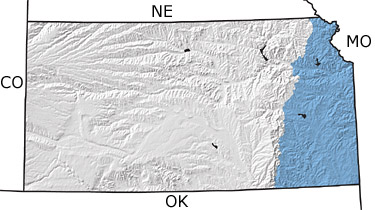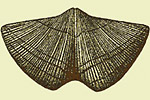Paleontology and geologyEarly Carboniferous (Mississippian) rocks occur only in the extreme southeast corner of the state. During these times, a shallow inland sea teemed with life and fossils of crinoids, brachiopods, and bryozoans are common in the thick limestone deposits in this area. During the Late Carboniferous (Pennsylvanian), sea level rose and fell across the state, resulting in sequences of mudstones, shales, sandstones, and limestones. The tropical nature of the fossils from this time period suggests a warm climate. Invertebrates included brachiopods, echinoids, bivalves, bryozoans, crinoids, gastropods, corals, and trilobites, which were abundant in the warm tropical seas. Stromatolites and calcareous green algae were common. Great swamps covered the low-lying areas along the coasts, and there were dense growths of primitive plants, including ferns as tall as trees. This rich vegetation eventually formed coal seams. Amphibians and early reptiles also inhabited these environments. This map indicates a broad band of Carboniferous rocks exposed along eastern Kansas. |


